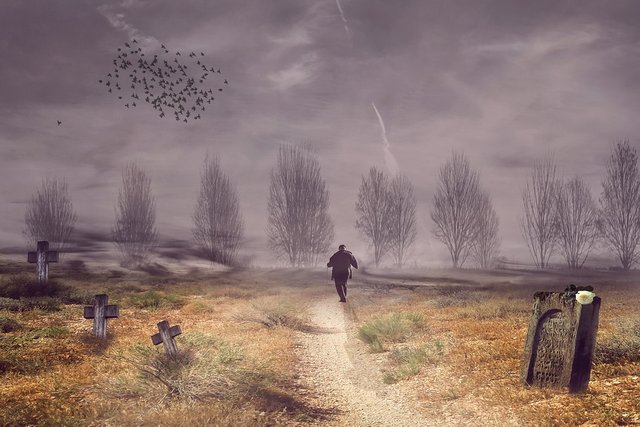Silent Spring a warning from Rachel Carson about synthetic biocides

In environmental material, day after day, ecological manuscripts are produced as a result of processes of reflection and research, related to the serious problems that our ecosystems go through, in the search for sensitizing us under an analytical, interpretative and critical perspective.
In this sense, it is worth mentioning that most of these articles are based on the theoretical considerations and warnings set out in the book: SPRING SILENT, whose authorship belongs to the naturalist writer Rachel Carson, environmental work from where I extracted many of the ideas and key approaches outlined in this Sunday delivery.

Fig. 2 One of the reasons for the migratory movements of birds is due to climate change responses. Image of public domain, Author: Myriams, 2017
By 1962, the biologist and prominent American naturalist writer Rachel Carson, presented to the world her positions and critical warnings of the inevitable environmental crisis caused by the means of production established since the appearance of the Industrial Revolution, whose processes of transformation and agro-technological management promote the use of chemicals such as biocides, largely responsible for environmental degradation, this by, the irreparable negative effects they generate on natural resources.
Among the most outstanding considerations expressed by Rachel Carson in her book Silent Spring, we can highlight her unrenounceable environmentalist approaches, pointing out that the application of synthetic biocides among these; pesticides, fungicides, bactericides, herbicides, is the preamble and declaration of "WAR AGAINST LIFE".
Intrinsically Carson, what he forged in his lines was to warn about the adverse effects, and the breaking of the balance of the ecosystems, aspects that he contrasted by exemplifying the strange and growing tranquility that is perceived in nature, whose silence not only dominates the fields in spring, but, is part of the infallible exhaustion of life, consideration that he compared especially with the decrease of the main groups of birds, as a result of the consumption of contaminated water by the discharge of these synthetic products.

Fig. 3 Climate changes on a global scale are impacting on bird population declines. Image of public domain, Author: Kellepics, 2018
In addition to the decrease in bird populations, the claims made by Carson also focus on the effect of synthetic biocides on human health, and the invaluable physiological alteration observed in plant species, which makes them susceptible to attack by pests and diseases, not to mention the implications for death and progressive deterioration of soil fertility.

Fig. 4 The large discharges of synthetic biocides, over time has negatively affected the biological quality of the soil. Image of public domain, Author: Comfreak, 2015
Each element developed, from the ecological vision of Rachel Carson, should lead the scientific community to consider the multiple pieces and isolated arguments in such a majestic work of naturalist warning, in the search for assembling the puzzle, which instructs new forms of agro-technological production under ecological precepts in defense of life.
BIBLIOGRAPHICAL REFERENCES CONSULTED:
[1] Carson R. Silent Spring. Boston, MA: Houghton Mifflin. 1962. Article: Online access
[2] Hayes T., y Hansen M. De la primavera silenciosa a la noche silenciosa: Agroquímicos y el antropoceno. Article: Online access
[3] Kroll G. The "Silent Springs" of Rachel Carson: Mass media and the origins of modern environmentalism. Public Understanding of Science. 2001; 10; 4: 403-20. Article: Online access